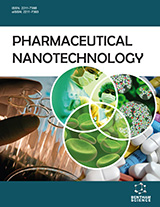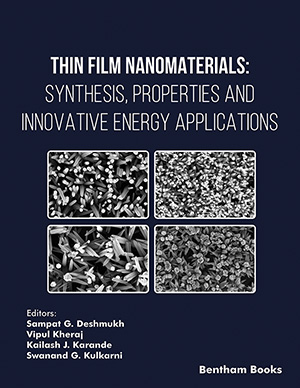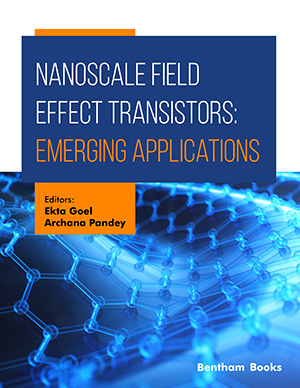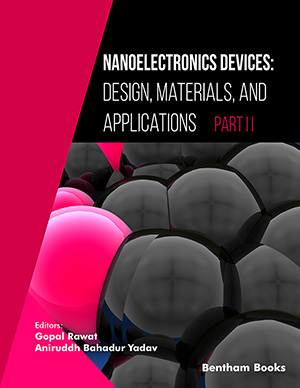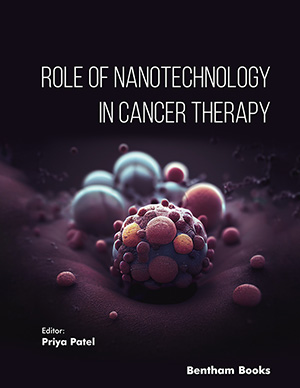
Abstract
Biocatalysts or enzymes have a pivotal role in speeding up most of the biochemical reactions that drives life processes. Although substrate-specific and promising, there are some pitfalls that limit their use for wide application. To counteract the shortcomings, artificial enzymes possessing enzyme characteristics with additional qualities have been devised, and that kick-started in the late 2000s. This review aims to provide an overview of nanozymes, designing concepts, nanomaterials and applications. To begin with, the limitations encountered by natural enzymes and its replacement with nanozymes have been highlighted. Secondly, how nanozymes evolved in due course of time, their classification and engineering strategies have been briefly described. Most importantly, the engineering of nanozymes for improved catalytic activities has also been discussed. A clear distinction between the enzymatic-mimic for various clinical and bioimaging applications has been critically reviewed. With this rapidly emerging technology, there would be a great demand pertaining to scalability, biosafety, catalytic diversity and environmental impacts challenging the futuristic world.
Keywords: Nanozymes, ion-adsorption, surface-modification, oxido-reductases, superoxide-dismutase, antibacteria, theranostics, cellular imaging.
Current Nanoscience
Title:Disruptive Nanozyme Technology for Futuristic Bio-Medical and Bio-imaging Applications
Volume: 17 Issue: 6
Author(s): Lakshmipathy Muthukrishnan*
Affiliation:
- Department of Conservative Dentistry & Endodontics, Saveetha Dental College and Hospitals, Saveetha Institute of Medical and Technical Sciences, Poonamallee High Road, Chennai, Tamil Nadu 600 077,India
Keywords: Nanozymes, ion-adsorption, surface-modification, oxido-reductases, superoxide-dismutase, antibacteria, theranostics, cellular imaging.
Abstract: Biocatalysts or enzymes have a pivotal role in speeding up most of the biochemical reactions that drives life processes. Although substrate-specific and promising, there are some pitfalls that limit their use for wide application. To counteract the shortcomings, artificial enzymes possessing enzyme characteristics with additional qualities have been devised, and that kick-started in the late 2000s. This review aims to provide an overview of nanozymes, designing concepts, nanomaterials and applications. To begin with, the limitations encountered by natural enzymes and its replacement with nanozymes have been highlighted. Secondly, how nanozymes evolved in due course of time, their classification and engineering strategies have been briefly described. Most importantly, the engineering of nanozymes for improved catalytic activities has also been discussed. A clear distinction between the enzymatic-mimic for various clinical and bioimaging applications has been critically reviewed. With this rapidly emerging technology, there would be a great demand pertaining to scalability, biosafety, catalytic diversity and environmental impacts challenging the futuristic world.
Export Options
About this article
Cite this article as:
Muthukrishnan Lakshmipathy *, Disruptive Nanozyme Technology for Futuristic Bio-Medical and Bio-imaging Applications, Current Nanoscience 2021; 17 (6) . https://dx.doi.org/10.2174/1573413717666210216120328
| DOI https://dx.doi.org/10.2174/1573413717666210216120328 |
Print ISSN 1573-4137 |
| Publisher Name Bentham Science Publisher |
Online ISSN 1875-6786 |
Call for Papers in Thematic Issues
Advanced Inorganic Nanocomposites and their Emerging Applications
This special issue will highlight developments in the recent trends in the synthesis of metal oxides, nanoclusters, biomaterials, 2D nanomaterials, nanocrystals, nanocomposites, etc., and their applications in electrochemical systems, tissue regeneration, energy storage and harvesting, sensors, etc. The novelty of the methods in the chemical synthesis, as well as their ...read more
Advanced Nanotechnology in Forensic Science: Revolutionizing Fingerprint Identification and Crime Scene Analysis
This special issue aims to provide a comprehensive exploration of the innovative fusion between nanotechnology and forensic science. It aspires to bridge the gap between traditional investigative techniques and cutting-edge nanoscale applications, envisioning a paradigm shift in forensic analysis. By compiling the expertise of multidisciplinary experts, the book's objectives include ...read more
Graphene and 2D Materials for Energy Storage and Conversion.
This thematic issue will discuss the recent advances in graphene-based nanomaterials for different energy technologies. Graphene possesses a high surface area, and stable structure and exhibits many interesting electronic, optical, and mechanical properties due to its 2D crystal structure. Graphene is of both fundamental interest and suitable for a wide ...read more
Nanopathology; A Promising Approach for Targeted Cancer Treatment
Cancer is the most challenging diseases in treatment worldwide. Recently, the nanotechnology opened the gate for targeting the cancer as a promising therapy. The small size and exceptional properties of nanoparticles give it several advantages for easily targeting of cancerous cells. Furthermore, this advantage allows them to easily penetrate deeply ...read more
Related Journals
 53
53
- Author Guidelines
- Graphical Abstracts
- Fabricating and Stating False Information
- Research Misconduct
- Post Publication Discussions and Corrections
- Publishing Ethics and Rectitude
- Increase Visibility of Your Article
- Archiving Policies
- Peer Review Workflow
- Order Your Article Before Print
- Promote Your Article
- Manuscript Transfer Facility
- Editorial Policies
- Allegations from Whistleblowers
Related Articles
-
Current Perspectives on Novel Drug Delivery Systems and Therapies for Management of Prostate Cancer: An Inclusive Review
Current Drug Targets HTLV-1-Associated Myelopathy/Tropical Spastic Paraparesis (HAM/TSP) Inflammatory Network
Inflammation & Allergy - Drug Targets (Discontinued) TRP Channels as A Newly Emerging Non-Voltage-Gated Ca2+ Entry Channel Superfamily
Current Pharmaceutical Design Recurrent Left Atrial Low-grade Malignant Inflammatory Myofibroblastic Tumor Characterized by Cardiovascular Magnetic Resonance
Current Medical Imaging Plant Derived Inhibitor Sulforaphane in Combinatorial Therapy Against Therapeutically Challenging Pancreatic Cancer
Anti-Cancer Agents in Medicinal Chemistry Identification of KEY lncRNAs and mRNAs Associated with Oral Squamous Cell Carcinoma Progression
Current Bioinformatics The Importance of Guidelines in the Development and Application of Probiotics
Current Pharmaceutical Design Photodynamic Therapy For Non-Melanoma Skin Cancers
Current Cancer Therapy Reviews Understanding the Molecular Properties and Metabolism of Top Prescribed Drugs
Current Topics in Medicinal Chemistry Editorial [Hot Topic: New Developments in the Medicinal Chemistry of Vanilloid TRPV1 and Related Receptors (Guest Editor: Arpad Szallasi)]
Current Topics in Medicinal Chemistry Drug Delivery Systems for Chemotherapeutics through Selected Polysaccharidic Vehicles
Current Organic Chemistry The Anti-Oxidant Properties of Isothiocyanates: A Review
Recent Patents on Endocrine, Metabolic & Immune Drug Discovery (Discontinued) Mechanism of Action and Therapeutic Potential of Novel Adamantyl Retinoid-Related Molecules
Current Cancer Therapy Reviews Anticancer Drug-Induced Immunomodulation and Cancer Therapeutics
Current Cancer Therapy Reviews Based on Nucleotides Analysis of Tumor Cell Lines to Construct and Validate a Prediction Model of Mechanisms of Chemotherapeutics
Anti-Cancer Agents in Medicinal Chemistry Introduction: MMPs, ADAMs/ADAMTSs Research Products to Achieve Big Dream
Anti-Cancer Agents in Medicinal Chemistry Therapeutic Effects of Curcumin against Bladder Cancer: A Review of Possible Molecular Pathways
Anti-Cancer Agents in Medicinal Chemistry Efficacy and Cardiovascular Safety of Antidiabetic Medications
Current Drug Safety Telocytes as a Source of Progenitor Cells in Regeneration and Repair Through Granulation Tissue
Current Stem Cell Research & Therapy Anti-pathogenic Strategies for Fighting Pseudomonas aeruginosa Infections- probiotic Soluble Compounds as Inhibitors of Quorum Sensing Genes Expression
Current Organic Chemistry












